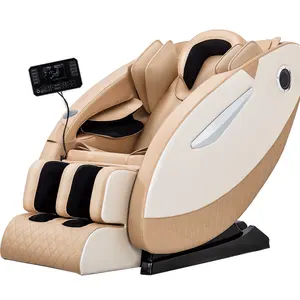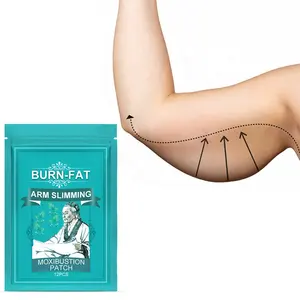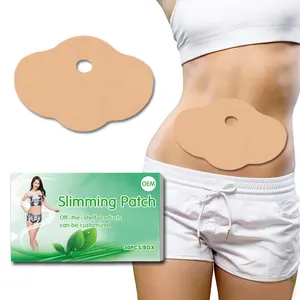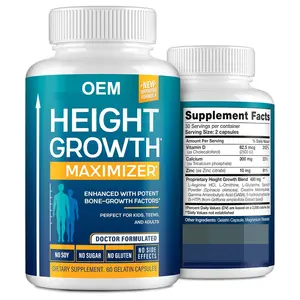Sektörünüzde popüler
- 10%






2023 moda High End TR90 kedi göz Anti mavi ışık bilgisayar gözlük gözlük Vintage mavi ışık engelleme gözlük çerçeveleri
Gönderime Hazır
₺86,32 - ₺107,90
Minimum Sipariş Miktarı: 2 Adet
Parça başına nakliye: ₺101,39







Teenyoun Metal çerçeve gözlük gözlük mavi ışık engelleme gözlük optik gözlük kadınlar için 2024 toptan

₺78,78 - ₺95,91
Minimum Sipariş Miktarı: 5 Adet
Parça başına nakliye: ₺78,44







Teenyoun 2024 okuma gözlüğü Metal mavi işık engelleme gözlük Anti mavi işık okuyucular için kadın erkek Unisex presbiyopik gözlük

₺53,10 - ₺83,92
Minimum Sipariş Miktarı: 10 Adet
Parça başına nakliye: ₺254,84

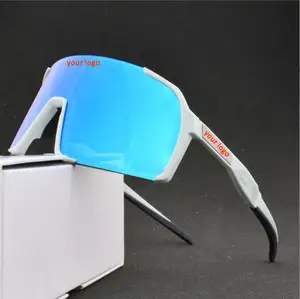





2023 OEM ODM fabrika özel UV400 yeni stil açık tr90 spor büyük Lens güneş gözlüğü sürme gözlük balıkçılık güneş gözlüğü
Gönderime Hazır
₺167,84 - ₺188,39
Minimum Sipariş Miktarı: 5 Adet
Parça başına nakliye: ₺119,20







Erkekler ve kadınlar için yeni spor renkler spor bisiklet güneş gözlüğü açık havada gözlük rüzgar geçirmez güneş gözlüğü
Gönderime Hazır
₺89,06 - ₺123,31
Minimum Sipariş Miktarı: 5 Adet
Parça başına nakliye: ₺112,01







17485 asetat optik gözlük çerçevesi gözlük camı gözlük çerçeveleri üreticileri reçete gözlük
₺205,52 - ₺308,27
Minimum Sipariş Miktarı: 12 Adet






Reçete gözlük çin ticaret Tr90 optik gözlük optik çerçeve Trendy gözlük çerçevesi Tr90 gözlük Gönderime Hazır
Gönderime Hazır
 Gönderime Hazır
Gönderime Hazır₺37,68 - ₺51,38
Minimum Sipariş Miktarı: 10 Adet
Parça başına nakliye: ₺89,06






Çin üretici toptan hafif anti mavi hafif reçete gözlük erkekler için tr90 kare optik göz gözlük çerçeveleri Gönderime Hazır
Gönderime Hazır
 Gönderime Hazır
Gönderime Hazır₺65,08 - ₺85,63
Minimum Sipariş Miktarı: 5 Adet
Parça başına nakliye: ₺60,97






TR90 çin kadınlar mavi Ray göz reçete lensler gözlük optik gözlük Retro çerçeveleri üreticileri yuvarlak erkekler gözlük
Gönderime Hazır
₺123,31 - ₺137,01
Minimum Sipariş Miktarı: 2 Adet
Parça başına nakliye: ₺124,34






Çin optik çerçeve vidasız yüksek elastik benzer Berlin tek vizyon gözlük optik çerçeve reçete gözlük özel
₺291,15 - ₺342,52
Minimum Sipariş Miktarı: 5 Adet
- 5%






MS 97525 Anti mavi ışık gözlük optik ilaçlı moda kadın çerçeve gözlük Metal kulaklık optik gözlük
Gönderime Hazır
₺123,65 - ₺136,67
Minimum Sipariş Miktarı: 1 Adet
Parça başına nakliye: ₺155,17
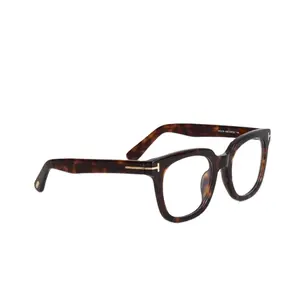





Adam için Vintage Tom optik gözlük çerçeveleri moda asetat kadınlar okuma miyopi reçete gözlük
Gönderime Hazır
₺123,31 - ₺178,80
Minimum Sipariş Miktarı: 2 Adet
Parça başına nakliye: ₺121,94
İlgili Aramalar:
çin reçete gözlükreçete gözlük hindistanmoda reçete gözlük 2019kadın s reçete gözlükmoda reçete gözlük6 reçete gözlüken düşük reçete gözlükmoda reçete gözlük 2017reçete gözlük trendleri 2019uzun reçete gözlüken düşük fiyatlı reçete gözlükretro reçete gözlüktasarım reçete gözlükyeni reçete gözlüks reçete gözlük






Tedarikçisi yuvarlak asetat Vintage gözlük optik çerçeve gözlük çerçevesi Wenzhou Unisex erkekler kadınlar için asetat reçete gözlük
Gönderime Hazır
₺160,65 - ₺181,20
Minimum Sipariş Miktarı: 2 Adet
Parça başına nakliye: ₺156,88






Özel reçete çerçeveleri gözlük çerçeveleri Anti yansıtıcı mavi ışık gözlük Vintage boy kedi göz gözlük çerçeve
Gönderime Hazır
₺54,12
Minimum Sipariş Miktarı: 2 Adet
Parça başına nakliye: ₺129,14






Moda kadınlar Anti mavi ışık engelleme gözlük esnek optik reçete gözlük lüks Metal kedi göz miyopi gözlük
Gönderime Hazır
₺72,62 - ₺136,33
Minimum Sipariş Miktarı: 2 Adet
Parça başına nakliye: ₺93,86






2023 saf titanyum gözlük çerçeve erkekler kadınlar Ultra hafif rahat gözlük çerçeveleri miyopi okuma optik reçete gözlük
₺162,36 - ₺187,71
Minimum Sipariş Miktarı: 10 Adet
Parça başına nakliye: ₺150,03
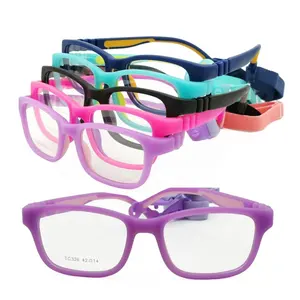





Yüksek klasik çift renkler esnek TR90 Temple tapınak ile TR90 kare özelleştirilmiş optik gözlük çerçeve mavi elastik kordon içerir
Gönderime Hazır
₺169,55 - ₺174,69
Minimum Sipariş Miktarı: 100 Adet
Parça başına nakliye: ₺10,97






G3001wholesale moda optik gözlük çerçeveleri unisex şeffaf el yapımı asetat çerçeve optik gözlük göz gözlük
Gönderime Hazır
₺120,57 - ₺143,18
Minimum Sipariş Miktarı: 6 Adet
Parça başına nakliye: ₺39,74






Mike optik kırmızı kedi gözü ucuz gözlük çerçevesi, cateye gözlük çerçeveleri gözlük, gözlük çerçevesi çin
Gönderime Hazır
₺1.787,96
Minimum Sipariş Miktarı: 1 Adet
Parça başına nakliye: ₺155,17





Tr90 erkek spor gözlük çerçeveleri moda reçete miyopi hipermetrop optik çerçeve erkek gözlük
Gönderime Hazır
₺205,52 - ₺239,77
Minimum Sipariş Miktarı: 10 Adet
Parça başına nakliye: ₺51,04






Glazzy reçete titanyum miyopi çerçeveleri gözlük Titan dikdörtgen gözlük optik çerçeve erkek son gözlük göz gözlük Gönderime Hazır
Gönderime Hazır
 Gönderime Hazır
Gönderime Hazır₺219,90 - ₺253,47
Minimum Sipariş Miktarı: 2 Adet
Parça başına nakliye: ₺91,46






Mavi ışık engelleme TR90 gözlük kare çerçeve Unisex moda tasarımcısı optik çerçeve göz gözlük boy
Gönderime Hazır
₺109,61 - ₺119,89
Minimum Sipariş Miktarı: 3 Adet
Parça başına nakliye: ₺87,35
- 11%






Büyük çerçeve kare siyah reçete gözlük optik çerçeve şeffaf Lens erkekler gözlük Vintage kadınlar Anti mavi ışık gözlük
Gönderime Hazır
₺59,60 - ₺71,93
Minimum Sipariş Miktarı: 2 Adet
Parça başına nakliye: ₺98,31






Borregls asetat alaşım gözlük çerçeve erkekler kadınlar yuvarlak miyopi optik reçete gözlük vidasız kore gözlük 28625
Gönderime Hazır
₺217,16 - ₺347,66
Minimum Sipariş Miktarı: 1 Adet
Parça başına nakliye: ₺175,72






Toptan esnek Tr90 Unisex Anti-ışık bilgisayar gözlük Anti Bluelight gözlük mavi ışık engelleme gözlük
Gönderime Hazır
₺92,49 - ₺119,89
Minimum Sipariş Miktarı: 5 Adet
Parça başına nakliye: ₺126,05






Titanyum gözlük çerçeveleri çerçevesiz esnek optik çerçeve reçete gözlük çerçevesiz gözlük göz gözlük çerçevesiz gözlük
Gönderime Hazır
₺57,55 - ₺92,49
Minimum Sipariş Miktarı: 2 Adet
Parça başına nakliye: ₺184,97
- 10%






Ucuz kare gözlük çerçevesi fotokromik stok reçete gözlük PC metal Anti mavi ışık bilgisayar gözlük
Gönderime Hazır
₺35,28 - ₺92,49
Minimum Sipariş Miktarı: 2 Adet
Parça başına nakliye: ₺191,82
- 31%





Shenzhen Retro yüksek kaliteli titanyum yuvarlak gözlük gözlük bellek titanyum tıknaz yuvarlak optik çerçeve gözlük gözlük
Gönderime Hazır
₺517,55 - ₺635,72
Minimum Sipariş Miktarı: 2 Adet
Parça başına nakliye: ₺240,11






2023 saf titanyum gözlük çerçeve erkekler kadınlar Ultra hafif rahat gözlük çerçeveleri miyopi okuma optik reçete gözlük
Gönderime Hazır
₺147,29 - ₺171,26
Minimum Sipariş Miktarı: 2 Adet
Parça başına nakliye: ₺124,00






Çin toptan gözlük klasik beyefendi iş erkek tasarım Highend kaliteli alüminyum reçete optik gözlük
Gönderime Hazır
₺170,92
Minimum Sipariş Miktarı: 2 Adet
Parça başına nakliye: ₺339,10






Moda kare çerçeve eski gözlük erkekler boy Metal gözlük çerçeveleri şeffaf Lens gözlük altın optik gözlük erkek 2024 Gönderime Hazır
Gönderime Hazır
 Gönderime Hazır
Gönderime Hazır₺81,52 - ₺104,82
Minimum Sipariş Miktarı: 2 Adet
Parça başına nakliye: ₺86,66






Stok gümrükleme yeni tasarım reçete gözlük havacılık alüminyum çerçeve titanyum bacaklar ile erkekler için optik gözlük gözlük wo
Gönderime Hazır
₺61,66 - ₺85,63
Minimum Sipariş Miktarı: 20 Adet
Parça başına nakliye: ₺82,21






Düz büyük çerçeve renk değiştiren gözlük kadın yüksek görünüm poligon güneş gözlüğü anti-mavi ışık unisex düz ayna Gönderime Hazır
Gönderime Hazır
 Gönderime Hazır
Gönderime Hazır₺60,63 - ₺65,43
Minimum Sipariş Miktarı: 5 Adet
Parça başına nakliye: ₺116,12






HBK kare gözlük dropshipping iş moda gözlük çerçeveleri gözlük 2021 yeni varış PG0566
Gönderime Hazır
₺75,02 - ₺102,08
Minimum Sipariş Miktarı: 1 Adet
Parça başına nakliye: ₺213,05





Fabrika satış yüksek kaliteli klasik optik çerçeve bayanlar Metal gözlük
Gönderime Hazır
₺123,31 - ₺137,01
Minimum Sipariş Miktarı: 1 Adet
Parça başına nakliye: ₺169,21






ADE WU PLS0455 moda mavi ışık engelleme gözlük kadınlar büyük boy kare optik gözlük reçete
Gönderime Hazır
₺61,66 - ₺71,93
Minimum Sipariş Miktarı: 12 Adet
Parça başına nakliye: ₺102,76






Optik göz gözlük çerçeve saf titanyum gözlük çerçeve gözlük çerçeveleri miyopi okuma optik reçete gözlük
Gönderime Hazır
₺147,29 - ₺167,84
Minimum Sipariş Miktarı: 2 Adet
Parça başına nakliye: ₺329,51






ZHIHENG yeni mavi ışık engelleme gözlük erkekler reçete gözlük çerçeve bilgisayar koruma optik gözlük
Gönderime Hazır
₺49,33 - ₺67,82
Minimum Sipariş Miktarı: 2 Adet
Parça başına nakliye: ₺279,84






Toptan Tom optik gözlük Ford moda asetat gözlük kadın güneş gözlüğü reçete çerçeveleri gözlük
Gönderime Hazır
₺195,24 - ₺411,03
Minimum Sipariş Miktarı: 1 Adet
Parça başına nakliye: ₺167,84






Anti mavi ışık fotokromik bitmiş miyopi gözlük ışığa duyarlı bukalemun Anti-glare değişim renk Lens reçete gözlük
₺160,99 - ₺376,78
Minimum Sipariş Miktarı: 20 Adet
En iyi kategoriler
reçete gözlük çin hakkında
reçete gözlük çin bugünlerde sıradan insanlar için yeni bir şey değil ve artık kullanımı bir tabu olarak görülmüyor. Sondan bir önceki zevki arıyorsanız, muazzam olanı kontrol etmelisiniz. Alibaba.com'da reçete gözlük çin koleksiyonu. Bunlar şehvetli ve kıvrımlı. reçete gözlük çin her kuruşa değer ve geceyi sizin için özel kılar. Bu bebeklerin saçlarından ayak parmaklarına kadar her anlamda gerçeğe yakın bir görünümü var.
İster hayat gibi bir partner arayan yalnız bir insan olun, ister hayatına renk katmak isteyen bir çift olun, bunları kullanabilirsiniz. . O yangını yakmak için reçete gözlük çin. Bunlar muhteşem. reçete gözlük çin, beklentilerinize göre özelleştirilebilir. Bunlar harika. reçete gözlük çin hem erkek hem de dişi versiyonlarda mevcuttur ve güvenli kullanım için ilaç sınıfı silikondan yapılmıştır. Şimdi bir tane alın ve tutku ve ateşle dolu bir gecenin tadını çıkarın.
Alibaba.com bu muhteşem seçenekleri sunuyor. Tüm vücut şekillerinde, boyutlarında ve etnik kökenlerde reçete gözlük çin. İçin gereksinimleriniz ne olursa olsun. reçete gözlük çin, hepsini sitede bulabilirsiniz. Bunlar. reçete gözlük çin en iyi ustalar tarafından şekillendirilir ve her karmaşık ayrıntı baştan sona incelenir. Bu bebeklerin gözleri, saçları, tırnakları ve diğer tüm vücut parçaları gerçek hayattaki bir insanınkine benzer.
Alibaba.com geniş bir yelpazede sunmaktadır. reçete gözlük çin bütçenize ve diğer gereksinimlerinize uyan ürünleri satın almanıza yardımcı olabilir. Bu ürünlerin kullanımı güvenli, sertifikalı ve doğası gereği çevre dostudur. Bu ürünler için OEM siparişleri mevcuttur.
İster hayat gibi bir partner arayan yalnız bir insan olun, ister hayatına renk katmak isteyen bir çift olun, bunları kullanabilirsiniz. . O yangını yakmak için reçete gözlük çin. Bunlar muhteşem. reçete gözlük çin, beklentilerinize göre özelleştirilebilir. Bunlar harika. reçete gözlük çin hem erkek hem de dişi versiyonlarda mevcuttur ve güvenli kullanım için ilaç sınıfı silikondan yapılmıştır. Şimdi bir tane alın ve tutku ve ateşle dolu bir gecenin tadını çıkarın.
Alibaba.com bu muhteşem seçenekleri sunuyor. Tüm vücut şekillerinde, boyutlarında ve etnik kökenlerde reçete gözlük çin. İçin gereksinimleriniz ne olursa olsun. reçete gözlük çin, hepsini sitede bulabilirsiniz. Bunlar. reçete gözlük çin en iyi ustalar tarafından şekillendirilir ve her karmaşık ayrıntı baştan sona incelenir. Bu bebeklerin gözleri, saçları, tırnakları ve diğer tüm vücut parçaları gerçek hayattaki bir insanınkine benzer.
Alibaba.com geniş bir yelpazede sunmaktadır. reçete gözlük çin bütçenize ve diğer gereksinimlerinize uyan ürünleri satın almanıza yardımcı olabilir. Bu ürünlerin kullanımı güvenli, sertifikalı ve doğası gereği çevre dostudur. Bu ürünler için OEM siparişleri mevcuttur.

